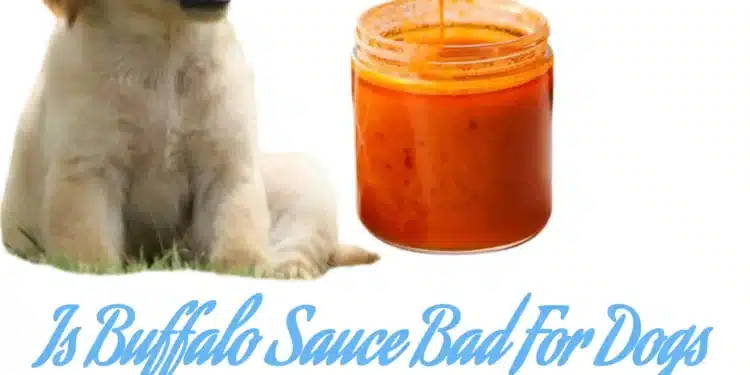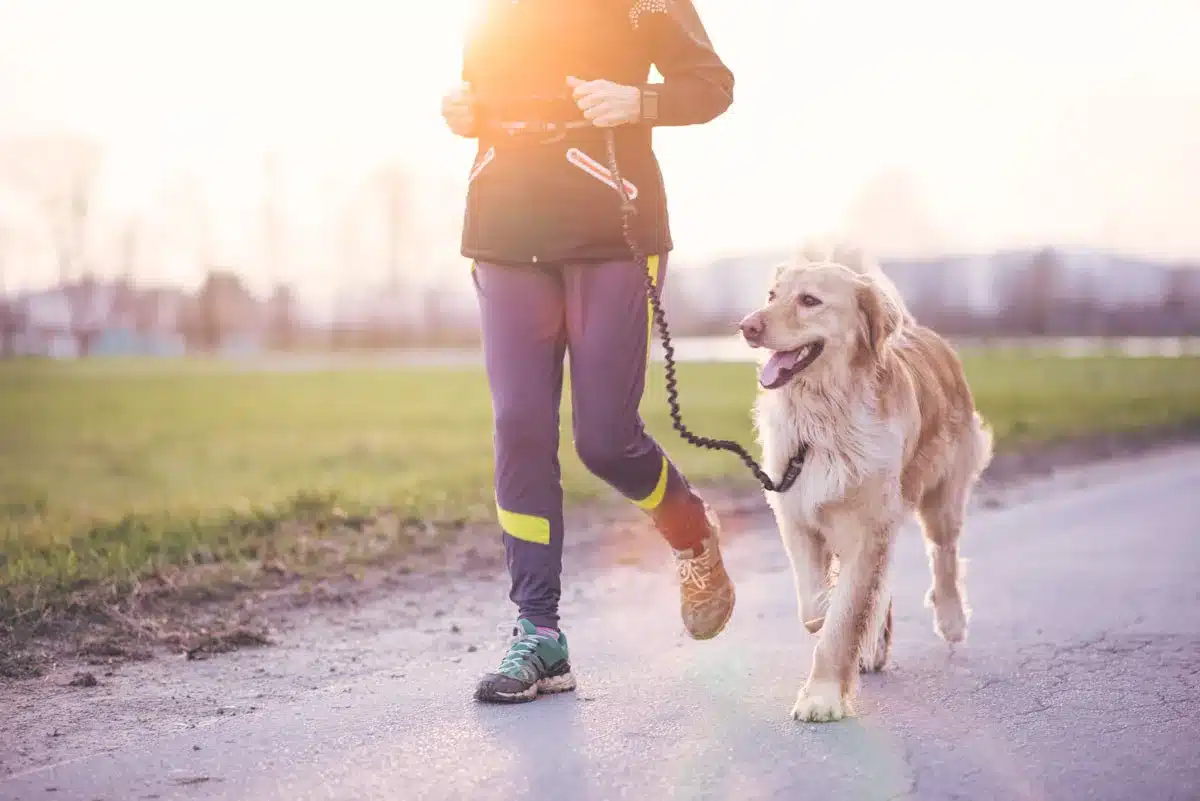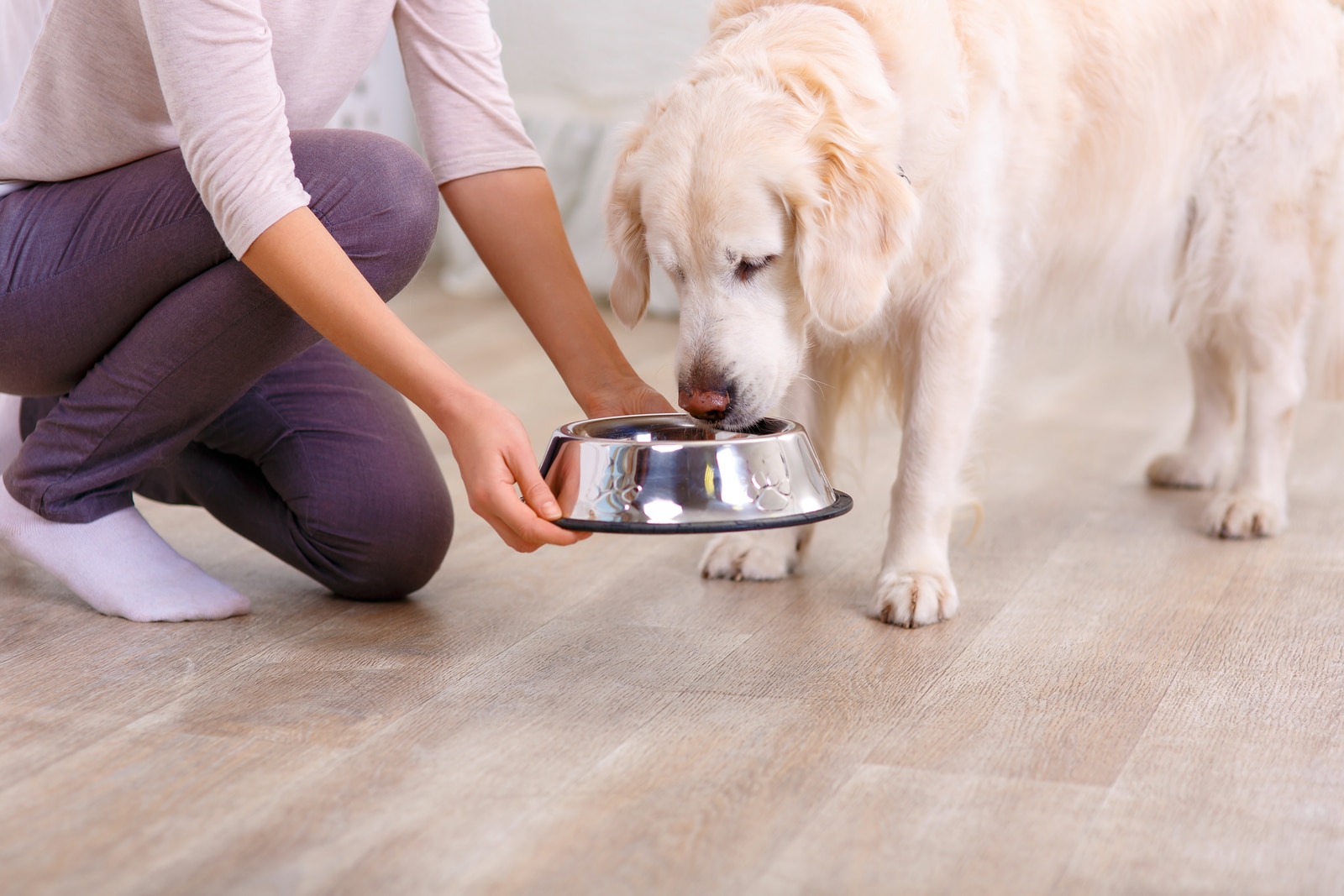Buffalo Sauce: Health Risks For Dogs Unveiled

Buffalo Sauce Health Risks For Dogs: When giving your pooch treats or when sharing human foods with your pet, it’s important to take into consideration–the ingredients in your food that could trouble your canine’s health.
A popular and flavorful addition to many dishes, buffalo sauce has ingredients that would certainly lead to a trip to the vet in significant amounts. In this blog post, we will delve into the potential risk buffalo sauce pose to your dog and explore other alternatives.
Is Buffalo Sauce Bad For Dogs
Buffalo sauce is not good for dogs. It has ingredients that can upset their stomach and cause digestive problems. The sauce usually has spicy components like cayenne pepper or chili powder which can be harmful to dogs. Buffalo sauces also have high levels of salt which can lead to dehydration and other health problems for dogs. It’s important to choose treats that are made specifically for dogs and meet their dietary requirements. While some human foods may be okay for dogs in small amounts, it’s important to make sure they are safe and healthy for your pet. Always be cautious and check before giving your dog any treats.
Ingredients in buffalo sauce and their potential effects on dogs
Let’s begin by taking a closer look at what makes buffalo sauce so delicious and irresistible, and examine how its key ingredients may affect our canine companions.
Hot sauce
Capsaicin: The primary source of heat in buffalo sauce comes from capsaicin, a compound found in chili peppers. Capsaicin is responsible for the burning sensation we experience when consuming spicy foods. While humans often enjoy this sensation, dogs have a more sensitive palate and may find it quite uncomfortable. Capsaicin can cause irritation in their mouths, throats, and stomachs, potentially leading to upset tummies.
Vinegar: Hot sauces, buffalo sauce included, typically boast a piquant, tangy flair, thanks in no small part to the presence of vinegar. While not inherently toxic to our canine companions, vinegar—when consumed in more substantial volumes—may usher in a host of digestive tribulations, including diarrhea and the dreaded act of regurgitation.
Butter
High-fat content: The luxurious, mouthwatering essence of buffalo sauce can largely be attributed to the inclusion of butter, which imparts both sumptuous flavor and decadent richness. Alas, this delectable ingredient concurrently elevates the sauce’s fat content, rendering it rather ill-suited for our cherished canine counterparts.When dogs partake in the indulgence of high-fat foods, they may grapple with proper digestion, leading to a slew of unpleasant consequences. Prolonged exposure to a fatty diet can culminate in weight gain and the dreaded specter of obesity.
Lactose: Some dogs are lactose intolerant, which means they have difficulty digesting the lactose found in dairy products like butter. While not all dogs are affected by lactose, those who are may experience gastrointestinal discomfort, bloating, gas, and diarrhea when consuming buffalo sauce.
Garlic and onion powder
Garlic and onion powder in buffalo sauce have thiosulfates that are harmful to dogs. These compounds can cause hemolytic anemia, which destroys red blood cells and poses a severe health risk. The risk increases with the amount of powder consumed. Even small quantities can be dangerous, so it’s best to avoid giving your dog buffalo sauce with these ingredients. Be cautious and keep your furry friend safe.
Health risks of buffalo sauce for dogs
While we’ve touched upon the potential dangers of some buffalo sauce ingredients, let’s take a more comprehensive look at the various health risks buffalo sauce can pose to our canine companions and how to recognize the signs.
Gastrointestinal problems
Diarrhea: One of the most common reactions dogs may have to buffalo sauce is diarrhea. The combination of capsaicin, vinegar, and lactose can lead to an upset stomach and result in loose or watery stools. If your dog experiences diarrhea after consuming buffalo sauce, make sure they have access to fresh water to prevent dehydration and monitor their condition closely.
Vomiting: In addition to diarrhea, some dogs may also vomit after ingesting buffalo sauce. Vomiting can be a response to the irritation caused by capsaicin or a result of lactose intolerance. Keep an eye on your dog, and if the vomiting persists or worsens, consult your veterinarian for further guidance.
Pancreatitis
Inflammation of the pancreas: As mentioned earlier, the high-fat content of buffalo sauce can contribute to the development of pancreatitis, a painful and potentially life-threatening inflammation of the pancreas. Pancreatitis can cause a range of symptoms, including abdominal pain, vomiting, diarrhea, loss of appetite, and lethargy. If you suspect your dog may have pancreatitis, contact your veterinarian immediately.
Symptoms and treatment: Pancreatitis can range from mild to severe, with treatment options varying accordingly. Mild cases of pancreatitis can be treated with diet, medicine, and fluids. Severe cases may need hospitalization and intensive care. It’s better to prevent pancreatitis by not giving your dog fatty foods like buffalo sauce.
Hemolytic anemia
Garlic and onion powder can harm dogs by causing hemolytic anemia. This means that red blood cells are destroyed too quickly, which affects oxygen transportation. Hemolytic anemia is dangerous and requires urgent veterinary care.
Symptoms and treatment: Weakness, lethargy, fast breathing, pale gums, and jaundice are symptoms of hemolytic anemia. Depending on severity, blood transfusions, medicines, and supportive care may be used. Avoid giving your dog buffalo sauce or garlic-onion powder to keep them safe.
Irritation and pain
Mouth and throat: The capsaicin in buffalo sauce can cause significant discomfort and irritation in your dog’s mouth and throat. Signs of irritation may include excessive drooling, pawing at the mouth, and refusal to eat or drink. Offering your dog water or a soothing treat, like a dog-safe frozen snack, may help alleviate the discomfort.
Eyes and skin: If your dog accidentally comes into contact with buffalo sauce, it may cause irritation to its eyes and skin. In case of contact, wash the affected area with water and monitor your dog for any signs of distress or worsening irritation. Consult your veterinarian if symptoms persist or worsen.
Now that we know buffalo sauce’s health dangers, let’s find dog-safe alternatives to keep our pets happy and healthy.
Safe alternatives for dogs
It’s clear that buffalo sauce isn’t the best choice for our canine companions, but fear not! There are plenty of dog-safe alternatives that will satisfy your pup’s taste buds while keeping them healthy and happy. Let’s explore some options to ensure your dog enjoys tasty treats without the risks associated with buffalo sauce.
Dog-safe treats
- Commercially available options: Many pet stores and online retailers offer a wide variety of dog treats specifically formulated for their nutritional needs. From crunchy biscuits to chewy bites, there’s something for every dog’s preference. When selecting store-bought treats, look for options made with natural ingredients and avoid those with artificial preservatives, colors, or excessive salt and sugar content.
- Homemade recipes: If you’re feeling creative and want to treat your dog to something special, consider making homemade dog treats! With a plethora of recipes available online, you can whip up tasty, nutritious goodies tailored to your dog’s taste and dietary requirements. Try making peanut butter and pumpkin dog treats, chicken jerky, or even dog-friendly “ice cream” using dog-safe ingredients.
Avoiding human food
- Training tips: To ensure your dog maintains a healthy diet, it’s important to train them not to beg for human food. Establishing boundaries early on will help prevent bad habits and reduce the likelihood of your dog consuming potentially harmful foods. Reward your dog with dog-safe treats for good behavior, and avoid feeding them from the table or kitchen counter.
- Maintaining a balanced diet: Providing your dog with a well-balanced, nutritionally complete diet is crucial for their overall health and well-being. Consult your veterinarian for advice on the best type of food for your dog’s age, breed, and activity level. Regularly scheduled mealtimes and portion control are key components of a balanced diet, helping to prevent obesity and related health issues.
Give your dog safe and tasty treats instead of buffalo sauce to avoid health risks. Be careful and don’t give your dog any human food that could be dangerous. You can keep your dog healthy and satisfied with some effort and creativity.

Final Thoughts
Buffalo sauce is not good for dogs. It has capsaicin, vinegar, high-fat content, and thiosulfates that can harm dogs. These ingredients can cause digestive issues, pancreatitis, anemia, and irritation. However, there are many dog-friendly snacks that you can give them. You can buy specially made dog treats or make homemade ones. It’s also important to maintain their balanced diet, and not let them eat human food. This will keep your dog healthy and happy.






